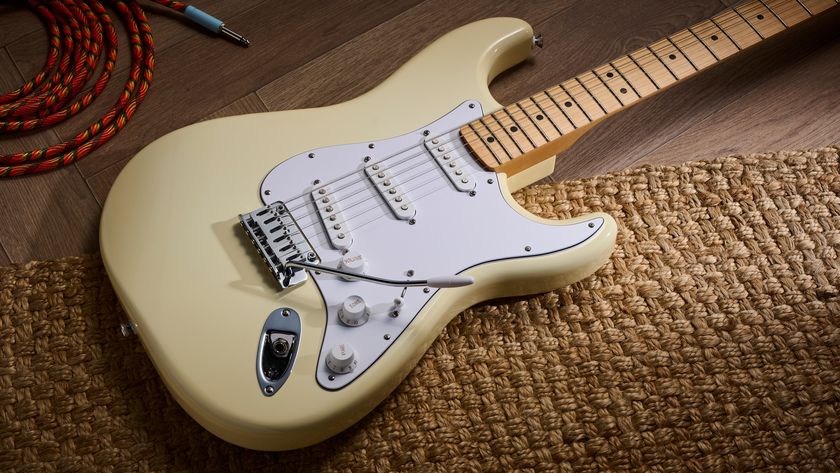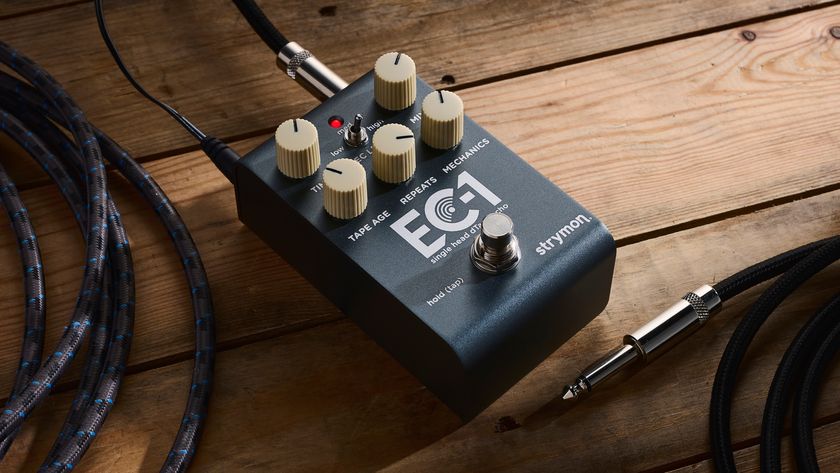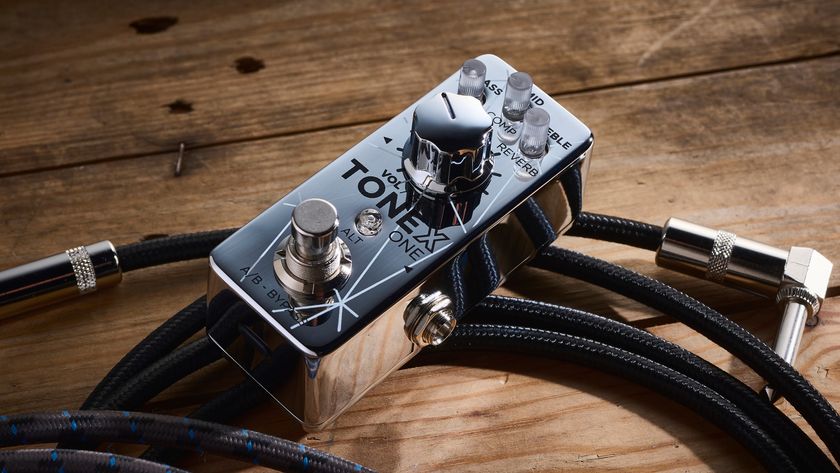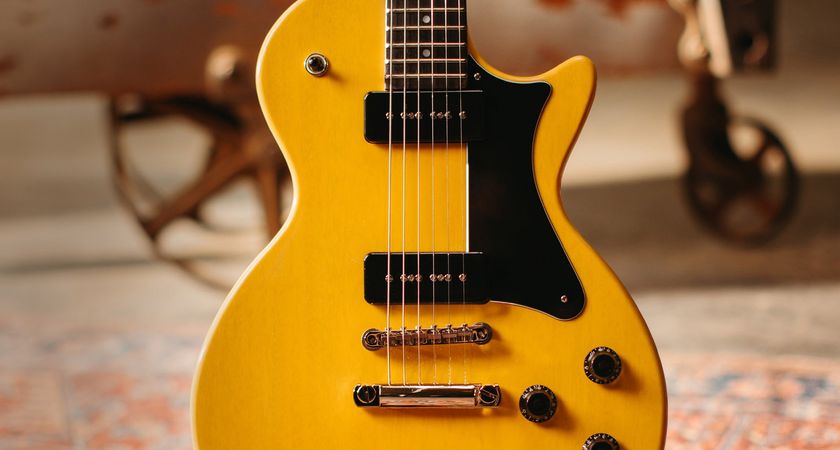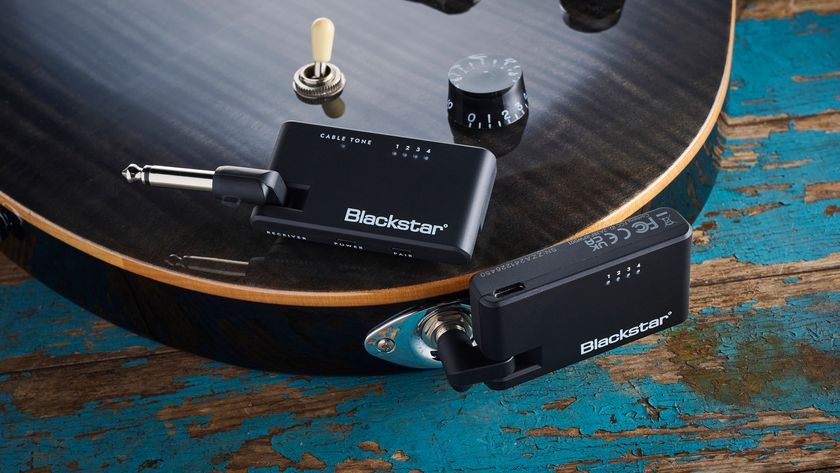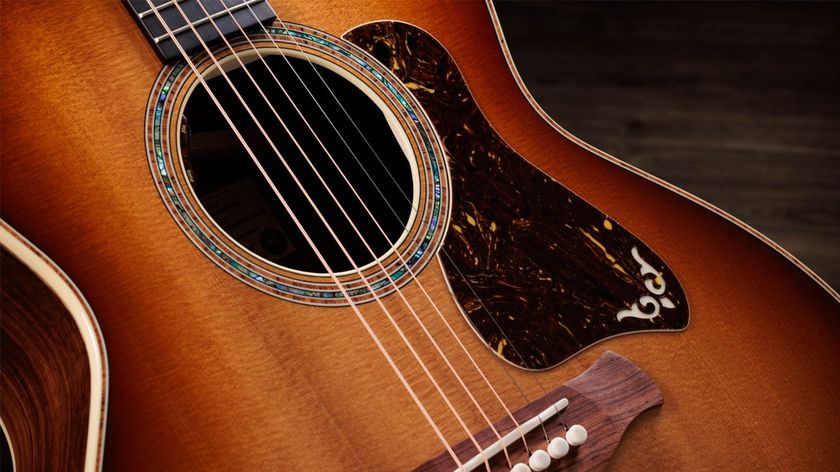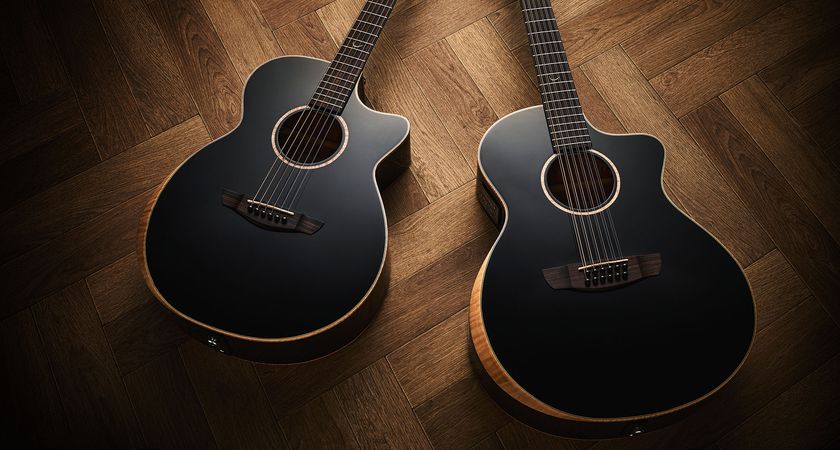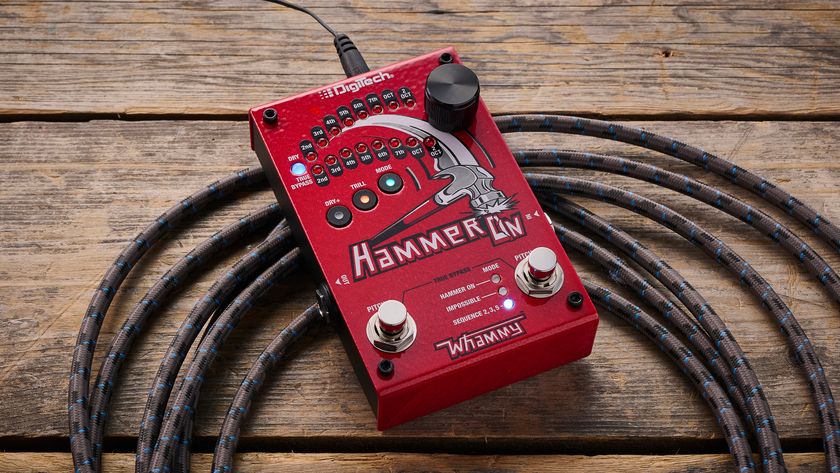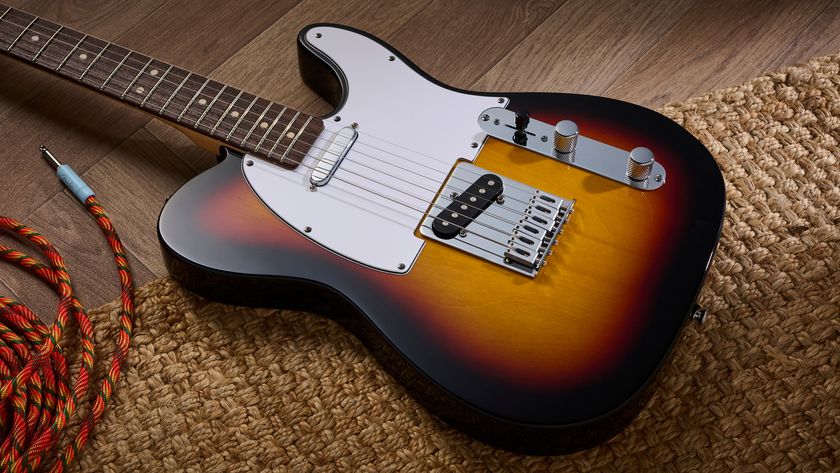Guitar World Verdict
It’s hard to successfully describe ‘tone’, but if you’re a gigging acoustic guitarist you need to get down to your nearest dealer to try an AEG-1 soon. We think you’ll be bowled over. We were.
Pros
- +
Probably the most convincing acoustic tone from an electro that we’ve yet heard.
- +
Attractive and futuristic.
- +
It plays well and is totally fuss-free in use.
Cons
- -
Is it a tad pricey? To the acoustic purist, it’s likely to be what a Tesla is to the petrolhead community – otherwise it’s a cracker!
You can trust Guitar World
What is it?
Lloyd Baggs is best known for designing industry standard acoustic guitar pickups such as the Anthem, Session VTC, HiFi and HiFi Duet. But, in fact, Baggs comes from the world of high-end lutherie, creating instruments for Ry Cooder, Jackson Browne, Janis Ian, Graham Nash and other great artists.
And it was watching Cooder struggling to amplify his Martin that set Lloyd on his new career path. “I saw Ry’s pain in trying to amplify his acoustic,” Baggs reveals. “It was pretty brutal, so it has become our quest to make amplifying an acoustic as easy, pleasurable and simple as it is with an electric guitar.”
Thinline electro-acoustics have been around for years, notables being Gibson’s Chet Atkins SST, the Godin Multiac (which Baggs had a hand in creating), Fender with its Highway and Acoustasonic series, and many others.
But after years of creating some of the world’s favourite acoustic pickups, Lloyd has returned to guitar building, combining his luthier’s knowledge with innovations in acoustic amplification that have since occurred, many of them his own.
The result is the new AEG-1. There are three different top options available: Natural Engelmann Spruce, Torrefied Sitka Spruce (as here) and Sunburst Sitka Spruce.

After much experimenting, Baggs devised a solid plywood frame into which the guitar’s top and back are inset, with the neck separately bolted into place.
“On a regular acoustic guitar the neck is actually held in place by the top and back,” explains Lloyd. “Take the back off and it’ll collapse. Since the AEG-1’s neck is only attached to the frame, it allows us to tune the top and back independently. Tuning the back allows us to really enhance the lower frequencies.”
The instrument’s multi-laminated poplar ply is made in the USA. “We started out using Baltic birch, but that stuff’s really heavy,” Lloyd continues, “whereas the American-made poplar ply is light, strong and stable.”

The AEG’s evolution reminds us of Les Paul’s experimentations with his ‘Log’, chopping up guitars to make prototypes until something works.
“Every couple of years I would take a few days out and try to figure out how to get rid of the ‘banjo’ sound that you can get with an electro-acoustic,” Baggs states.
“When Covid hit, the guys in the shop said, ‘Why don’t you build a guitar?’ So I hollowed out a solidbody, put a really good top on it and a really good pickup in it, and it was good but not exactly thrilling.
“So I cut down a cheap 000-size Chinese guitar to the thickness of an acoustic-electric, then put wood around the inside lining to simulate what a hollowed-out guitar’s sides would be, and stuck the back on.
“That sounded really good, so I did some tuning and when I got the frequency of the back below that of the top, it started to get a really nice bass. I then laminated a bunch of plywood, and on our CNC we cut out the first bodies and it was, ‘Oh, this works!’”

The ply frame is machined so that its laminated lines are exposed around the guitar’s edges. There’s also an attractive forearm chamfer, like you’ll find on certain high-end acoustics. The faux soundhole is a circular slice of the poplar ply, with the ‘rosette’ a sunken recess between this and the top itself.
Our example features a back of handsome Indian rosewood, and it all makes for a good-looking, if futuristic, take on the electro-acoustic theme. Four hefty bolts hold the medium-C-profile African mahogany neck in place; atop this sits a bound Indian rosewood fingerboard with 20 medium-fine frets, and the headstock holds six fully enclosed, cream‑buttoned tuners.
Internally, the AEG-1 is braced in a regular scalloped ‘X’ pattern, with a bridge plate that carries the pickup sensors and microphone. Baggs has chosen to fit his ready-made HiFi Duet, with its twin sensors and Silo mic all attached to the plate (a removable circular wooden disc on the rear allows access if required).

“Since our iBeam, we’ve been trying to make a bridge plate pickup that works,” reveals Lloyd. “There’s a bunch of them out there, but they’re not very dynamic and they feed back early. The HiFi has all the advantages of an undersaddle pickup, such as feedback resistance, stability, dynamics and presence, but it’s non-invasive: you just stick it on and drive it away.”
To control all this, the system’s discrete studio-quality preamp is mated to a side-mounted panel housing volume, tone, pickup/mic balance, phase inverter and battery life indicator.
The AEG-1’s overall level of construction is exactly what you’d expect from a Korean-made instrument, with a flat, high-gloss poly finish and everything confidently put together.
Specs

- PRICE: $1,599/£2,015 (inc gigbag)
- ORIGIN: Korea (by Crafter)
- TYPE: Thin-bodied, cutaway electro-acoustic
- BODY: High-quality plywood poplar frame (made in USA), w/ solid Sitka spruce top w/ scalloped bracing, Indian rosewood back
- MAX RIM DEPTH: 60mm
- MAX BODY WIDTH: 394mm
- NECK: African mahogany w/ medium ‘C’ profile
- SCALE LENGTH: 651mm (25.63”)
- TUNERS: Closed-back
- NUT/WIDTH: Composite/43mm
- FINGERBOARD: Indian rosewood, wooden dot fret markers 406mm (16”) radius
- FRETS: 20, medium
- BRIDGE/SPACING: Indian rosewood bridge w/ composite saddle/55.1mm
- ELECTRICS: Custom LR Baggs HiFi Duet w/ HiFi bridge plate pickup and Silo microphone, side-mounted control panel w/ volume, tone, mic/pickup balance, phase invert button, and low-battery warning light, powered by single 9V battery
- WEIGHT (kg/lb): 2.721/6
- OPTIONS: None
- RANGE OPTIONS: As above but w/ torrefied Sitka spruce or natural Engelmann spruce top
- LEFT-HANDERS: No
- FINISHES: Natural Engelmann Spruce (as reviewed), Torrefied Sitka Spruce, Sunburst Sitka Spruce
- CONTACT: LR Baggs
Playability and sounds

Due to the way the heel attaches to the poplar body frame, it’s a chunky affair, but you can get pretty high up on the neck if need be. With its satin finish, the neck feels reassuringly meaty in the hand, and the action is low and comfortable straight out of the quality padded gigbag.
Plugging into an AER Compact 60 set flat, the response is pure and natural
Unplugged, the sound from the AEG-1 is surprisingly fulsome and acoustic-like, with plenty of volume and no hint of boxiness. Plugging into an AER Compact 60 set flat, the response is pure and natural.
Setting the guitar’s volume and tone to taste and experimenting with the microphone blend control reveals a set of acoustic tones that are warm and clear, but even at its extremes there’s nothing unpleasant.

We settled on the pot set at around two-thirds of its sweep, which added a lively breathiness to an already convincing acoustic tone.
We encountered no feedback issues, and are confident that an AEG-1 would give even the most complex of live acoustic guitar rigs a run for its money.
Verdict
Verdict: ★★★★½
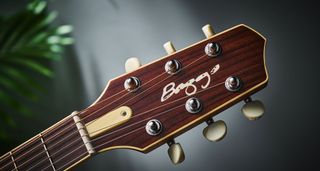
“We’ve always had a sneaky jealousy for electric guitar companies,” confesses Lloyd Baggs. “Any 12-year-old kid can go into a guitar store, plug in an electric guitar and have a big grin on his face. But amplifying an acoustic is more like going to the dentist for a root canal. So we wanted to build a guitar that, when you closed your eyes, you were hearing a real acoustic.”
We wanted to build a guitar that, when you closed your eyes, you were hearing a real acoustic
Lloyd Baggs
And we can only conclude that LR Baggs has done just that! It’s several hundred more than even a US-made Fender Acoustasonic, but while there’s no magnetic pickup for those electric tones, we really like the simpler, uncompromising proposition the AEG-1 offers.
Guitar World verdict: It’s hard to successfully describe ‘tone’, but if you’re a gigging acoustic guitarist you need to get down to your nearest dealer to try an AEG-1 soon. We think you’ll be bowled over. We were.
Hands-on videos
LR Baggs
Trey Hensley
Aaron Short
- “This is the most appealing combination of sounds I’ve heard on an Acoustasonic Player model to date – but there are still caveats”: Fender FINNEAS Acoustasonic Player Telecaster review
- Best acoustic electric guitars 2025: electro-acoustic picks for every type of player
- This article first appeared in Guitarist. Subscribe and save.
In the late '70s and early '80s Neville worked for Selmer/Norlin as one of Gibson's UK guitar repairers, before joining CBS/Fender in the same role. He then moved to the fledgling Guitarist magazine as staff writer, rising to editor in 1986. He remained editor for 14 years before launching and editing Guitar Techniques magazine. Although now semi-retired he still works for both magazines. Neville has been a member of Marty Wilde's 'Wildcats' since 1983, and recorded his own album, The Blues Headlines, in 2019.
You must confirm your public display name before commenting
Please logout and then login again, you will then be prompted to enter your display name.
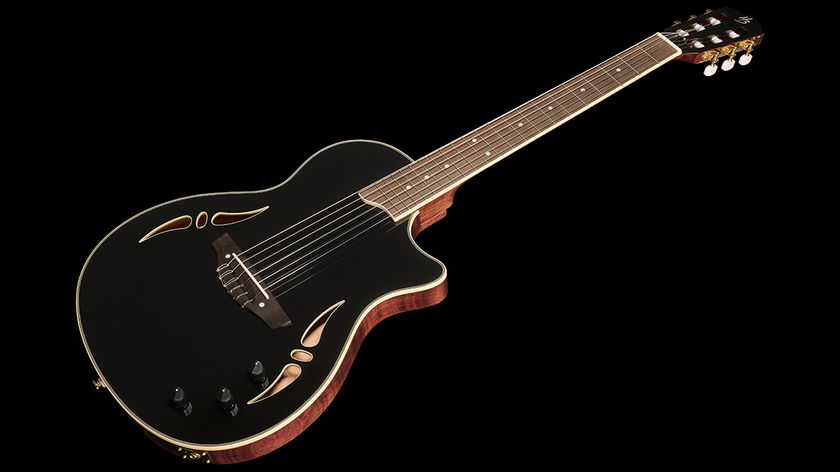
“A classical guitar for the modern era, with all the specifications expected by the seasoned player”: Harley Benton seizes on the Polyphia-led nylon-string revival with a versatile acoustic-electric for under $300

“The all-in-one music creation companion”: Donner’s HUSH-I PRO offers built-in FX and onboard IRs – and it could be the ultimate travel guitar






